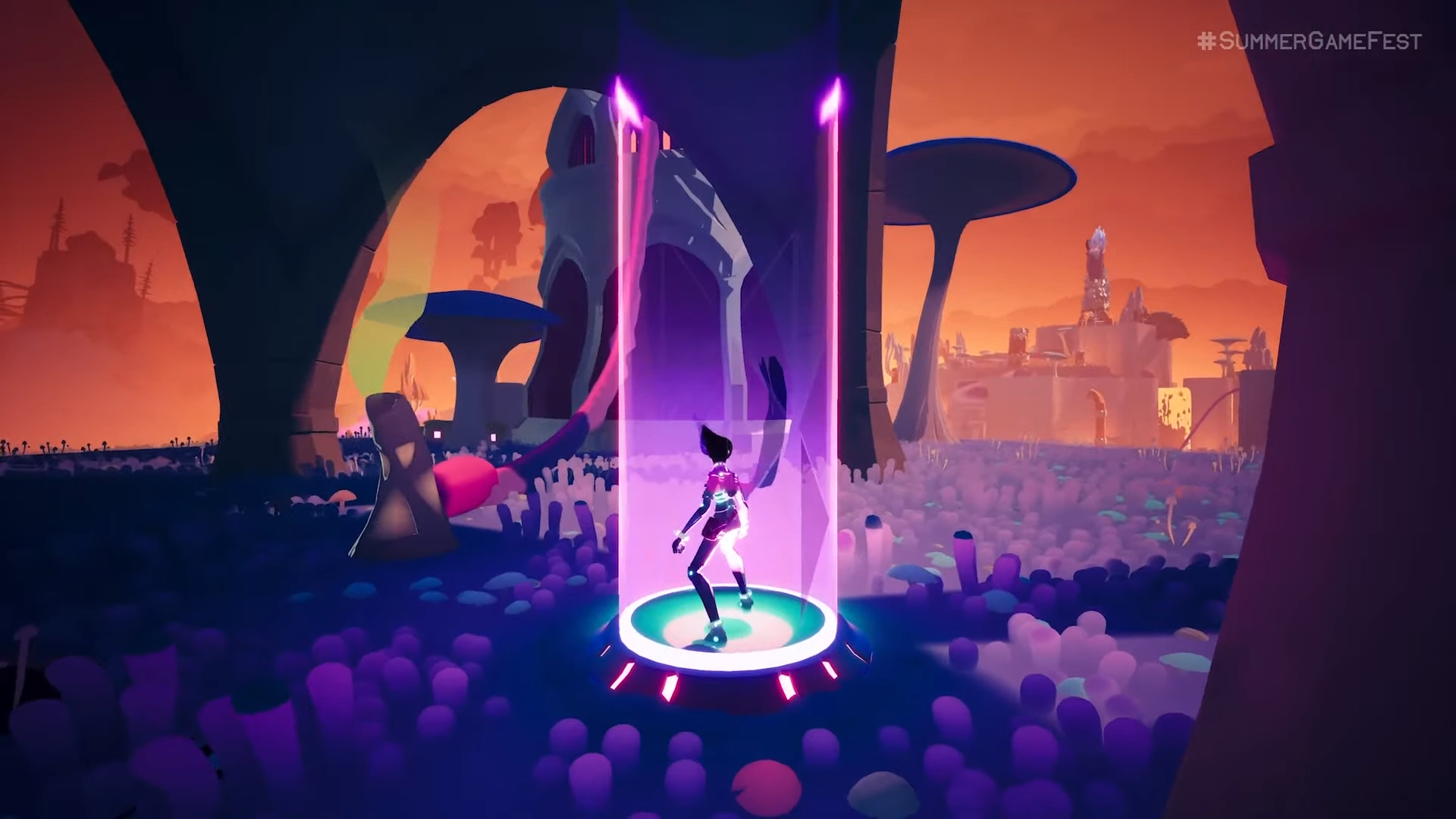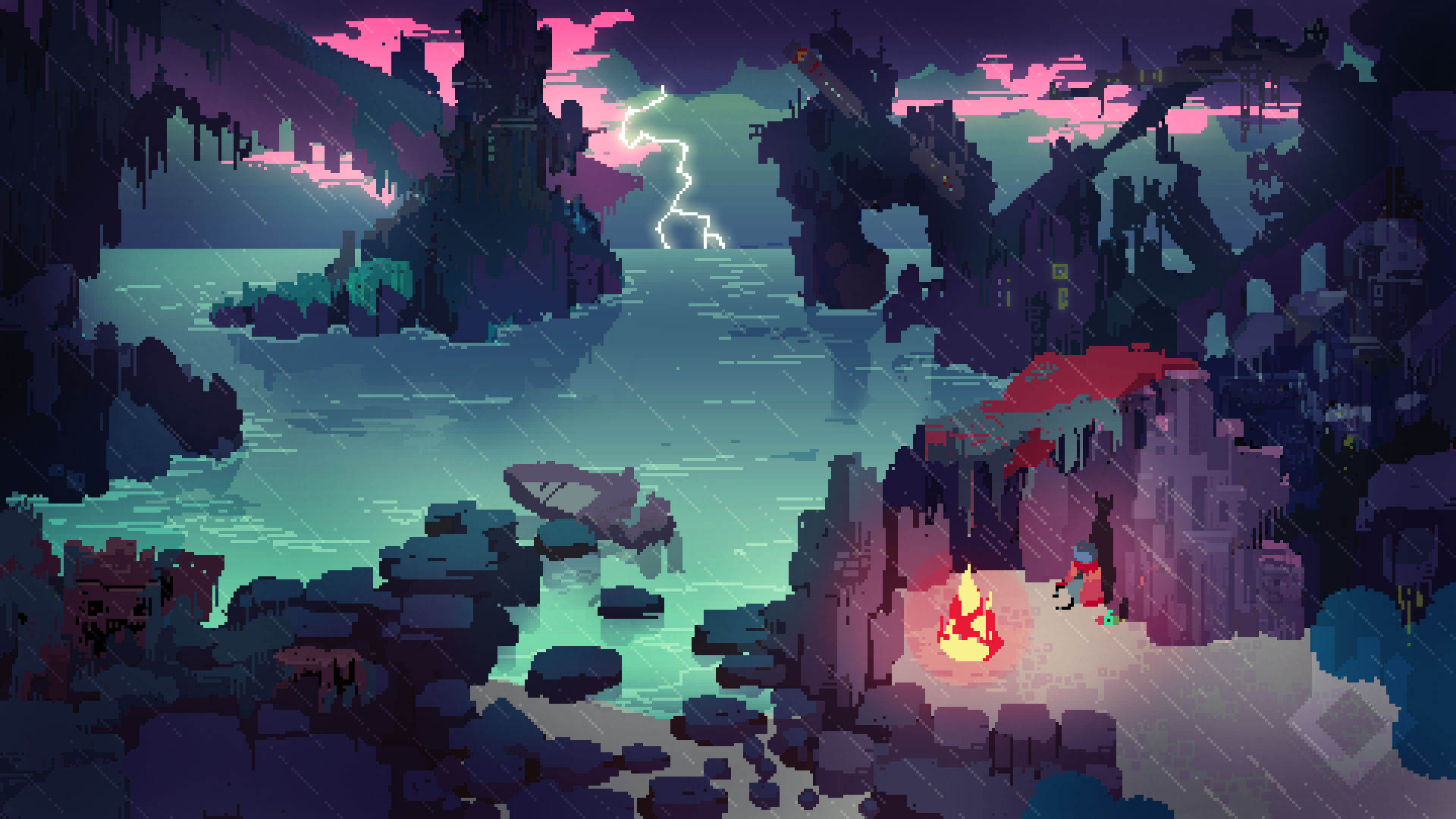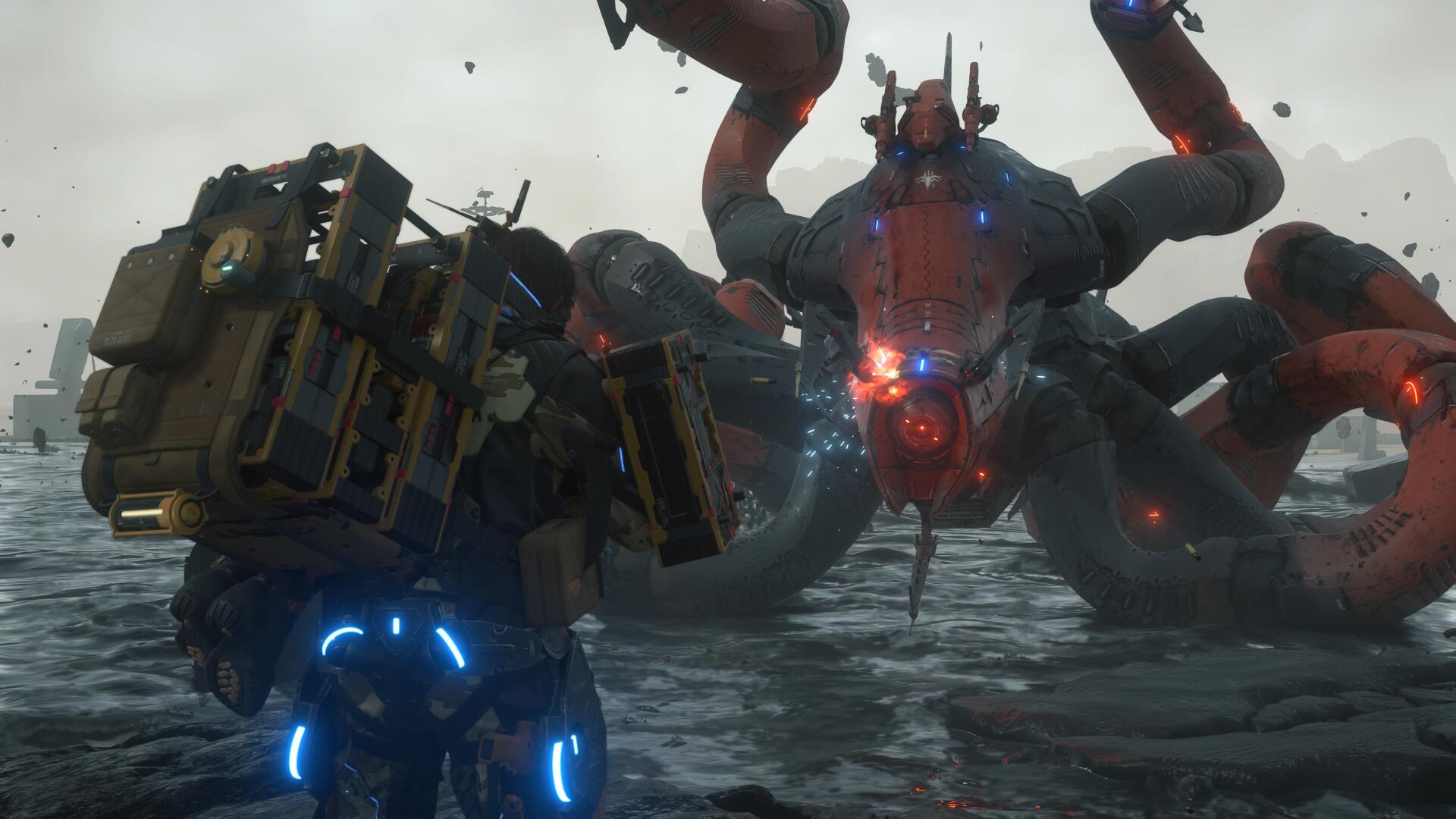Solar Ash is the fast-paced, neon follow up to Hyper Light Drifter from Heart Machine
Solar Ash and its speedy style explained by developer Alx Preston
Solar Ash is the latest game from the creators of the Hyper Light Drifter, the intriguing 2D action RPG. It's a visually striking entrance into the world of 3D platforming for the studio, and a new video debuted at the Annapurna showcase gave us a glimpse of the neon world of speed, acrobatic combat, and giant monsters.
You play as Voidrunner Rei, exploring the world inside a black hole known as the Ultravoid. Rei travels across the bright landscapes at high speed, skating and gliding across surfaces, using rails and a grappling hook when she can.
"A lot of our game is around movement traversal, and trying to get into some sort of flow state, really understanding the character control, keeping that somewhat simple. And then focusing on the world around you," explains Alx Preston, founder of Heart Machine, the studio behind Solar Ash.
"You kind of have the move set that you have from the outset, and so there's a level of mastery that you can achieve with that over time. And hopefully, as the challenge escalates, you, in turn, your skill level escalates to match that, and you start to understand the nuances of the control because we have a lot of physicality to it."

Rei will also face different enemies in the game, from manageable minions to huge, Shadow of the Colossus style Sentinels that she'll need to scale to defeat. Preston explains that the same flowing traversal that you'll need to explore the world will also be key to fighting these giant threats.
"Our character still moves relatively seamlessly, even over these big giant creatures that are the size of levels. And so it's, it's just carrying through the same kind of mentality we have with level design because they are levels," he says.
"We aren't changing the controls dramatically. We have this gravity that feeds into it as well to keep you on. It's just we're trying to escalate the level of danger to it. So all that flowing is really part of it, the system around that you're hitting is more timing-based and there's a lot of pressure on you to get to the next node very quickly. And so that's how we keep encouraging and pushing the player."
Weekly digests, tales from the communities you love, and more

While Solar Ash takes place in the same universe as Hyper Light Drifter, it looks like a huge leap forward for Heart Machine. Most game creators would feel a lot of pressure, but Preston has a healthy perspective on the process.
"I maintain a relative level of chill," he says.
"Certainly I get anxious and I want to push on certain elements or want to hurry up and get certain things done. But all things are about perspective. And for me, you know, I just had a major [medical] procedure done. That's a whole lot more rough and tumble than anything on the project."
Preston has spoken in the past about how his health inspired some of Hyper Light Drifter, the hero in the game is searching for a cure for his terminal illness. In the development of Solar Ash, Preston's personal experiences have guided his responses to the demands of the process.
"The way that my body doesn't work provides me some level of perspective that making the game is extremely hard. It's an extraordinary thing that any video game gets done whatsoever. On top of that, again, being good is even wilder. But even the toughest components of that aren't really as stressful as life and death scenarios typically. I always try and keep that in mind when I'm dealing with stress levels, or if things get intense on production. It's like, it'll be alright. We'll be fine. So it doesn't mean I don't get tense or anxious or stressed out. We all do, but I try to maintain that perspective."
Solar Ash will be released on October 26 for PS5, PS4, and PC.
Want more PlayStation flavored goodness? Here's our guide on upcoming PS5 games.

Rachel Weber is the former US Managing Editor of GamesRadar+ and lives in Brooklyn, New York. She joined GamesRadar+ in 2017, revitalizing the news coverage and building new processes and strategies for the US team.


